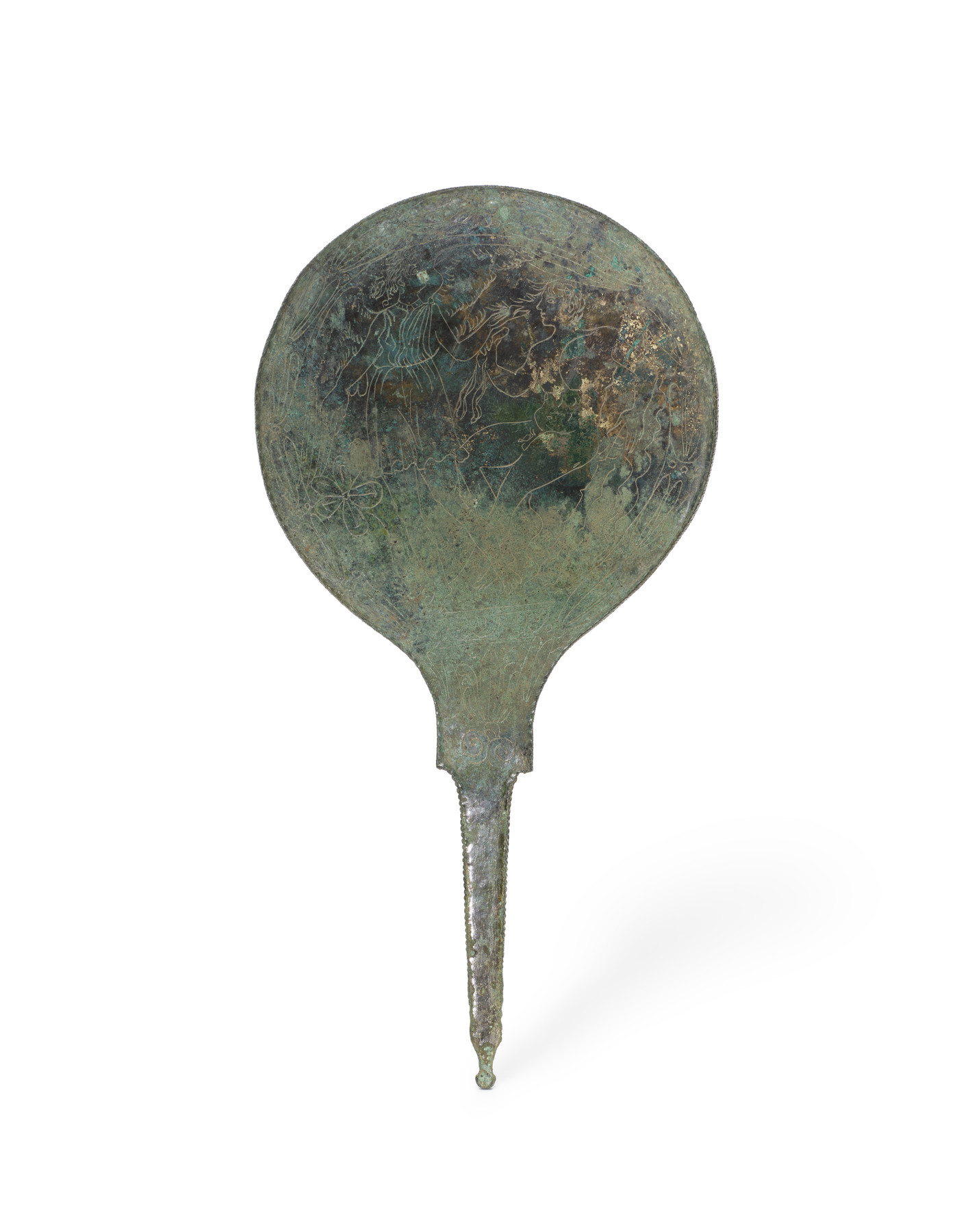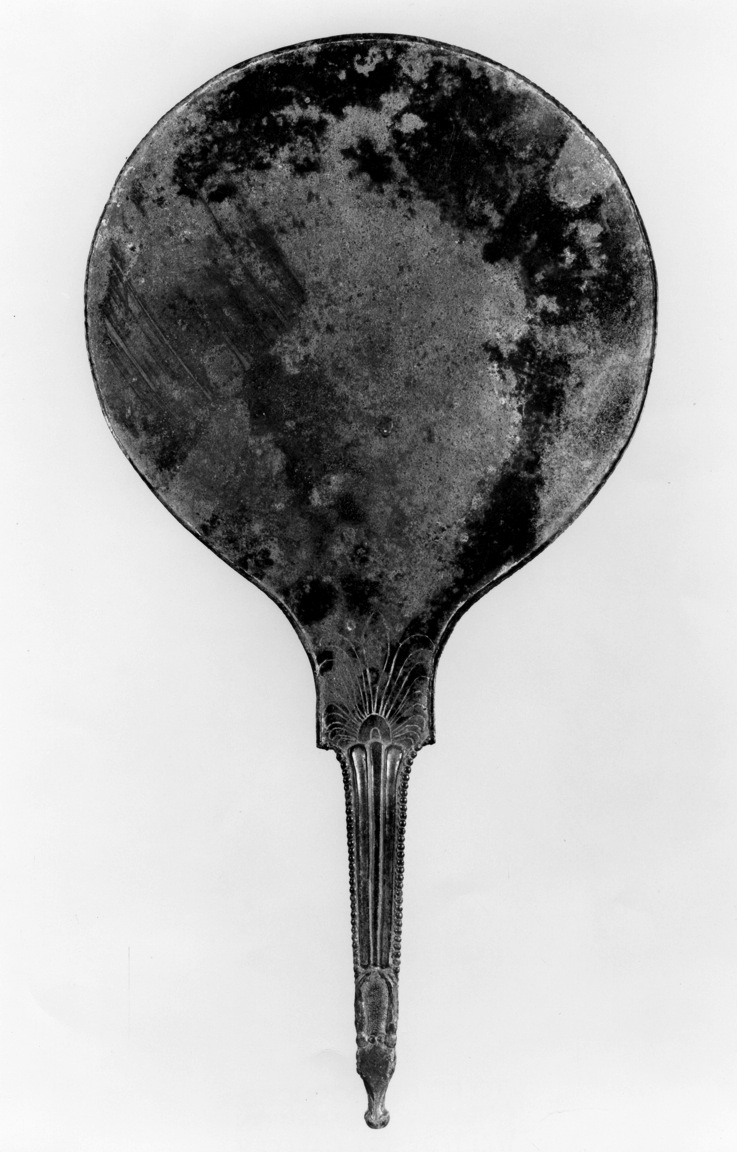Mirror with a Lasa (Winged Mythological Maiden) and Hercules
(Roman Empire )
In ancient times, mirrors were made of bronze containing a relatively large amount of tin. This produced a bronze which could be polished to a highly reflective surface. Over time this surface has corroded, meaning the metals have converted to a mineral form, resulting in a mottled dark green patina. This type of patina forms over long periods of time during burial.
Provenance
Provenance (from the French provenir, 'to come from/forth') is the chronology of the ownership, custody, or location of a historical object. Learn more about provenance at the Walters.
Madame E. Warneck Collection Sale, Hôtel Drouot, Paris, 1905, lot 264. Henry Walters, Baltimore, [date and mode of acquisition unknown]; Walters Art Museum, 1931, by bequest.
Exhibitions
| 1995 | The Allure of Bronze. The Walters Art Gallery, Baltimore. |
Conservation
| Date | Description | Narrative |
|---|---|---|
| 3/17/1980 | Examination | examined for technical study; x-ray |
| 7/20/1992 | Treatment | other |
Geographies
Italy (Place of Origin)
Measurements
H: 11 15/16 x W: 6 3/16 in. (30.4 x 15.7 cm)
Credit Line
Acquired by Henry Walters, by 1931
Location in Museum
Not on view
Accession Number
In libraries, galleries, museums, and archives, an accession number is a unique identifier assigned to each object in the collection.
In libraries, galleries, museums, and archives, an accession number is a unique identifier assigned to each object in the collection.
54.92






